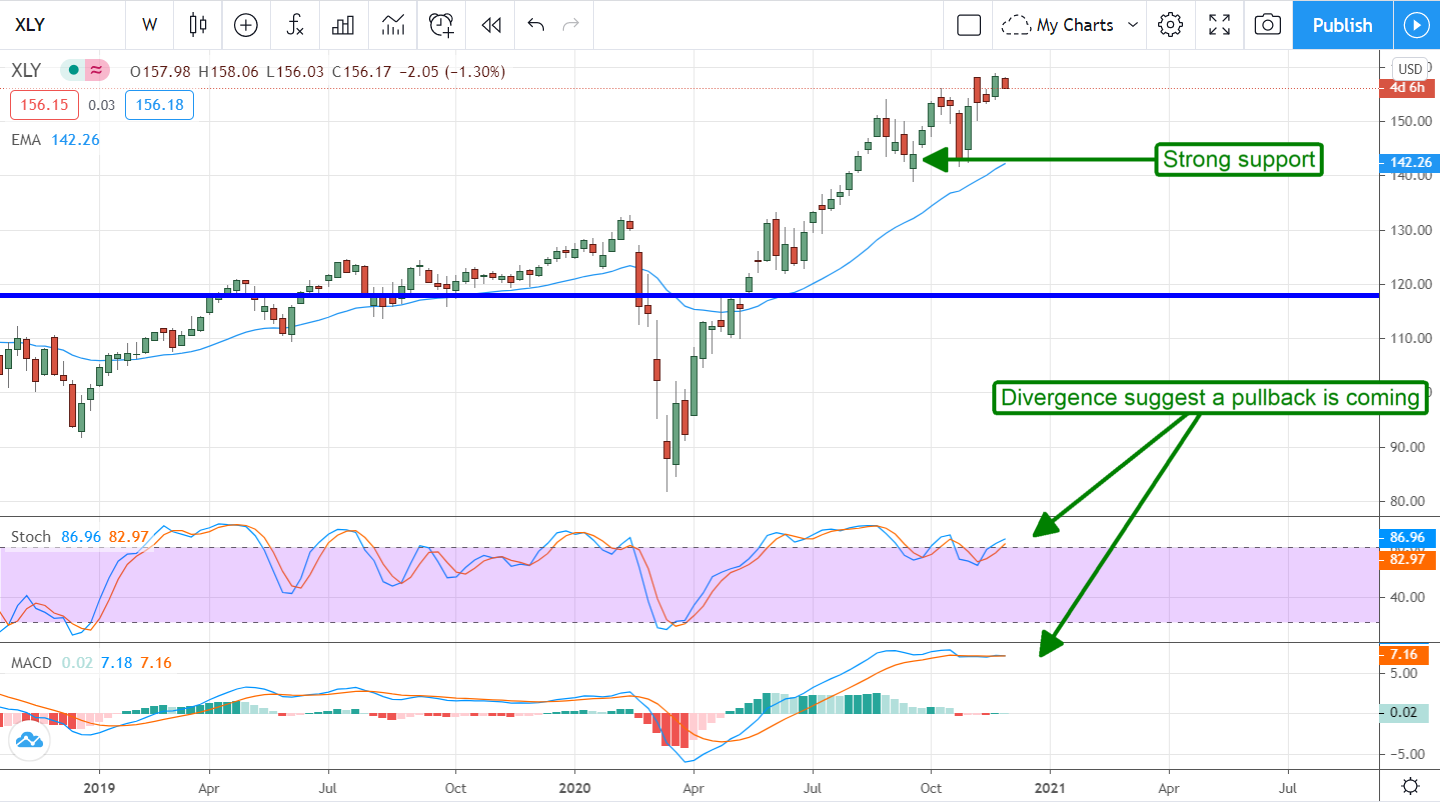It’s Time To Get Ready For Q4 Earnings
With the 3rd quarter earnings season all but over it is time to look at what to expect from the next cycle. If the Q3 results are any indication, and I think they are, what investors need to expect is this: the consensus outlook for the 4th quarter is still too low. The difference between the S&P 500 (NYSEARCA:SPY) consensus estimate at the start of the Q3 season and the final result is close to 1800 basis points. That compares to about a 1400 basis point difference in the 1st quarter.
So far, the consensus for Q4 has risen only 200 basis points from a low of -12.7% to the current -10.6%. That leaves quite a bit of upswing and based on the data, revenue earnings are accelerating so the difference could be much larger. The takeaway is the earnings rebound is strong, the trajectory of growth is up, the outlook for Q4 is too low, and there is a very great chance that Q4 earnings growth will be positive. All reasons to think the S&P 500 will go higher. The caveat is that not all sectors will see the same growth. The Energy Sector, for one, is still looking at a near triple-digit decline in YOY earnings and that figure is getting worse, not better.
Consumer Discretionary Is A Rock-Star
The Consumer Discretionary Sector (NYSE:XLY) is not one you think of, at least not me, when I am thinking about an economy on the rocks. The pandemic sparked a massive downgrade of the sector that, it turns out, was very very wrong. Not only was the U.S. consumer in good shape before the pandemic started but the economic stimulus and economic rebound have supported robust spending in this area. Looking at the 3Q numbers, the consensus estimate at the beginning of the quarter was a full 3200 basis points below the reality. Looking at the 4th quarter consensus, the average estimate has only improved by 180 basis points suggesting the analysts are far behind the curve.

The top two holdings in the XLY Consumer Discretionary SPDR are Amazon (NASDAQ:AMZN) and Home Depot (NYSE:HD) and they account for more than 30%. Both companies have reported robust upticks in YOY revenue and earnings due to the pandemic and those trends are not expected to wane. Regarding Amazon, it is the go-to source for eCommerce and that industry is booming. Amazon, itself, has sustained YOY revenue growth in the range of 40% while others are reporting triple-digit eCommerce gains. As for Home Depot, the pandemic is supporting a secular shift to at-home living that can also be seen in the housing data.
Looking at the chart of weekly prices it is clear the XLY is in a strong rebound. The ETF not only rebound in a Vee-bottom but it moved up to set new all-time highs after the correction. Now, the ETF appears to be a little overextended and in need of a sell-off. The indicators are still technically bullish but show major divergence. I wouldn’t expect the market to reverse but I would expect to see it sell-off. When it does I would target the $150 and $140 levels as potential entry points.
The Health Care Sector Is Growing The Fastest
The Health Care sector (NYSEARCA:XLV) is another surprising winner from the Q3 reporting season. The Health Care sector finished the quarter with the highest rate of YOY growth of all 11 S&P 500 sectors. The final tally was just shy of 13.0% YOY EPS growth or a 1350 basis point improvement over the consensus estimate. Looking forward, the sector is expected to lead in the 4th quarter as well. The current consensus is near 4.5% and has been holding steady despite the strong 3Q showing. On an industry basis, all 6 sub-industries are growing and should contribute to positive results in the 4th quarter. Assuming the 3Q performance is repeated, EPS growth for this sector could reach the 17%-to-20% range.
The Health Care sector made a solid rebound from the March lows just like the Consumer Discretionary Sector but not quite as robust. The XLV Health Care Sector SPDR peaked out near 9.0% above its pre-COVID all-time high where the XLY is up closer to 20%. Another difference is that the XLV has already begun to pull back from its peak and hinting at a buy signal. The ETF is bouncing from potentially strong support at $108 with mixed indicators. The indicators are mixed but consistent with consolidation and support at this level. The biggest risk, technically speaking, is the stochastic indicator. Stochastic is showing a weak bearish crossover that may lead the price action lower. In that scenario, the 30-bar EMA is the next target for support.
Before you make your next trade, you'll want to hear this.
MarketBeat keeps track of Wall Street's top-rated and best performing research analysts and the stocks they recommend to their clients on a daily basis.
Our team has identified the five stocks that top analysts are quietly whispering to their clients to buy now before the broader market catches on... and none of the big name stocks were on the list.
They believe these five stocks are the five best companies for investors to buy now...
See The Five Stocks Here
Enter your email address and we'll send you MarketBeat's list of seven best retirement stocks and why they should be in your portfolio.
Get This Free Report
Like this article? Share it with a colleague.
Link copied to clipboard.